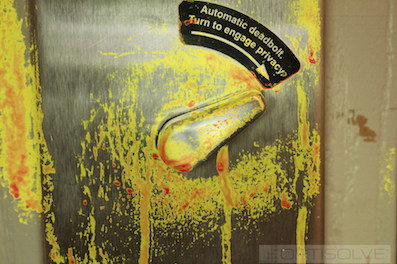 Cleanzine: your weekly cleaning and hygiene industry newsletter 10th July 2025 Issue no. 1170
Cleanzine: your weekly cleaning and hygiene industry newsletter 10th July 2025 Issue no. 1170
Your industry news - first
The original and best - for over 20 years!
We strongly recommend viewing Cleanzine full size in your web browser. Click our masthead above to visit our website version.
OptiSolve germ report on hotels reveals which surfaces have the most germs in a hotel
 We all know how dirty hotel rooms can be, but where are the worst places for germs? This week at the Canadian Sustainability Conference in Toronto, the OptiSolve Germ Report team and host, Jason Tetro, unleashed the powers of their Pathfinder technology to 'make the invisible visible' in hotel rooms.
We all know how dirty hotel rooms can be, but where are the worst places for germs? This week at the Canadian Sustainability Conference in Toronto, the OptiSolve Germ Report team and host, Jason Tetro, unleashed the powers of their Pathfinder technology to 'make the invisible visible' in hotel rooms.
OptiSolve Pathfinder technology makes the invisible visible on a hotel door latch. This shows severe biological material through proprietary imaging technology, which provides a breakthrough that facilitates precision cleaning to improve environmental health and safety in all types of facilities from hotels to hospitals to food manufacturing plants to educational facilities and offices.
This investigative report utilises OptiSolve's ground-breaking process to image and assess high touch surfaces in hotel rooms. The results show that a star rating has nothing to do with cleanliness.
According Brad Evans, CEO of OptiSolve, the results are more than surprising. "It is frightening when we consider that germs known to thrive in hotel rooms like the antibiotic resistant superbug Acinetobacter baumannii from the dirty dozen of pathogens can survive on a surface for up to three weeks," he says.
"It's why OptiSolve has developed a proprietary process to transform the cleaning industry. OptiSolve provides a breakthrough that facilitates precision cleaning to improve environmental health and safety in all types of facilities from hotels to hospitals to food manufacturing plants to educational facilities and offices."
OptiSolve is a division of the family-owned Canadian company Charlotte Products. It is an environmental monitoring system that utilises a unique optical sensor technology, called Pathfinder, to image and assess surfaces for microbial contamination.
In February, OptiSolve was awarded a $4.5 million Genome Canada grant to further enhance the Pathfinder technology to allow for recognition and identification of specific pathogen species to make the invisible visible. As Brad Evans points out: "This grant takes us to the next level where we will be able to identify deadly pathogens such as C. difficile and Listeria on surfaces in real time."
www.germreport.com / www.optisolve.net
16th May 2019







